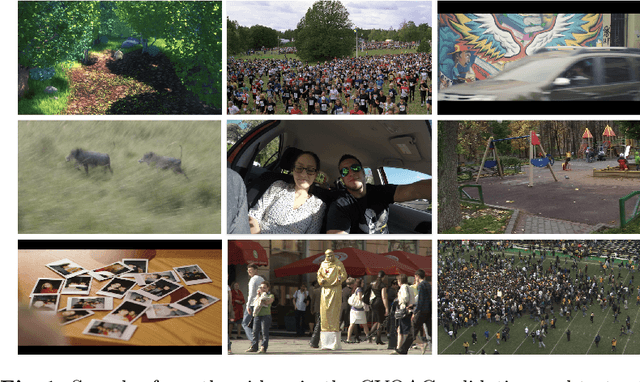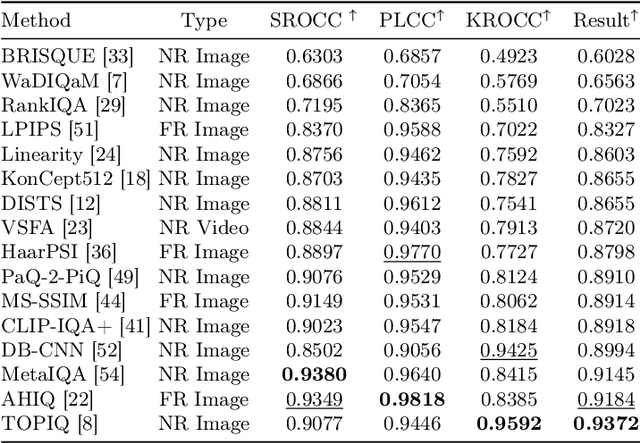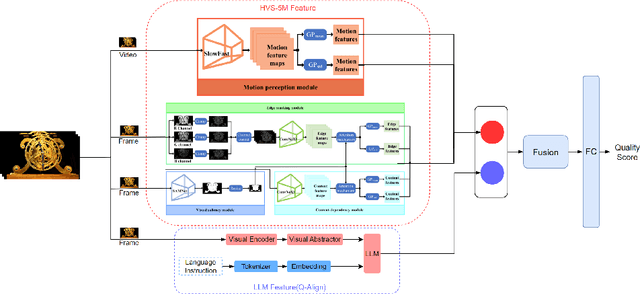Shan Liu
Distribution Guidance Network for Weakly Supervised Point Cloud Semantic Segmentation
Oct 10, 2024



Abstract:Despite alleviating the dependence on dense annotations inherent to fully supervised methods, weakly supervised point cloud semantic segmentation suffers from inadequate supervision signals. In response to this challenge, we introduce a novel perspective that imparts auxiliary constraints by regulating the feature space under weak supervision. Our initial investigation identifies which distributions accurately characterize the feature space, subsequently leveraging this priori to guide the alignment of the weakly supervised embeddings. Specifically, we analyze the superiority of the mixture of von Mises-Fisher distributions (moVMF) among several common distribution candidates. Accordingly, we develop a Distribution Guidance Network (DGNet), which comprises a weakly supervised learning branch and a distribution alignment branch. Leveraging reliable clustering initialization derived from the weakly supervised learning branch, the distribution alignment branch alternately updates the parameters of the moVMF and the network, ensuring alignment with the moVMF-defined latent space. Extensive experiments validate the rationality and effectiveness of our distribution choice and network design. Consequently, DGNet achieves state-of-the-art performance under multiple datasets and various weakly supervised settings.
AIM 2024 Challenge on Compressed Video Quality Assessment: Methods and Results
Aug 21, 2024



Abstract:Video quality assessment (VQA) is a crucial task in the development of video compression standards, as it directly impacts the viewer experience. This paper presents the results of the Compressed Video Quality Assessment challenge, held in conjunction with the Advances in Image Manipulation (AIM) workshop at ECCV 2024. The challenge aimed to evaluate the performance of VQA methods on a diverse dataset of 459 videos, encoded with 14 codecs of various compression standards (AVC/H.264, HEVC/H.265, AV1, and VVC/H.266) and containing a comprehensive collection of compression artifacts. To measure the methods performance, we employed traditional correlation coefficients between their predictions and subjective scores, which were collected via large-scale crowdsourced pairwise human comparisons. For training purposes, participants were provided with the Compressed Video Quality Assessment Dataset (CVQAD), a previously developed dataset of 1022 videos. Up to 30 participating teams registered for the challenge, while we report the results of 6 teams, which submitted valid final solutions and code for reproducing the results. Moreover, we calculated and present the performance of state-of-the-art VQA methods on the developed dataset, providing a comprehensive benchmark for future research. The dataset, results, and online leaderboard are publicly available at https://challenges.videoprocessing.ai/challenges/compressed-video-quality-assessment.html.
BVI-UGC: A Video Quality Database for User-Generated Content Transcoding
Aug 13, 2024



Abstract:In recent years, user-generated content (UGC) has become one of the major video types consumed via streaming networks. Numerous research contributions have focused on assessing its visual quality through subjective tests and objective modeling. In most cases, objective assessments are based on a no-reference scenario, where the corresponding reference content is assumed not to be available. However, full-reference video quality assessment is also important for UGC in the delivery pipeline, particularly associated with the video transcoding process. In this context, we present a new UGC video quality database, BVI-UGC, for user-generated content transcoding, which contains 60 (non-pristine) reference videos and 1,080 test sequences. In this work, we simulated the creation of non-pristine reference sequences (with a wide range of compression distortions), typical of content uploaded to UGC platforms for transcoding. A comprehensive crowdsourced subjective study was then conducted involving more than 3,500 human participants. Based on this collected subjective data, we benchmarked the performance of 10 full-reference and 11 no-reference quality metrics. Our results demonstrate the poor performance (SROCC values are lower than 0.6) of these metrics in predicting the perceptual quality of UGC in two different scenarios (with or without a reference).
Perception-Guided Quality Metric of 3D Point Clouds Using Hybrid Strategy
Jul 04, 2024Abstract:Full-reference point cloud quality assessment (FR-PCQA) aims to infer the quality of distorted point clouds with available references. Most of the existing FR-PCQA metrics ignore the fact that the human visual system (HVS) dynamically tackles visual information according to different distortion levels (i.e., distortion detection for high-quality samples and appearance perception for low-quality samples) and measure point cloud quality using unified features. To bridge the gap, in this paper, we propose a perception-guided hybrid metric (PHM) that adaptively leverages two visual strategies with respect to distortion degree to predict point cloud quality: to measure visible difference in high-quality samples, PHM takes into account the masking effect and employs texture complexity as an effective compensatory factor for absolute difference; on the other hand, PHM leverages spectral graph theory to evaluate appearance degradation in low-quality samples. Variations in geometric signals on graphs and changes in the spectral graph wavelet coefficients are utilized to characterize geometry and texture appearance degradation, respectively. Finally, the results obtained from the two components are combined in a non-linear method to produce an overall quality score of the tested point cloud. The results of the experiment on five independent databases show that PHM achieves state-of-the-art (SOTA) performance and offers significant performance improvement in multiple distortion environments. The code is publicly available at https://github.com/zhangyujie-1998/PHM.
Video Coding with Cross-Component Sample Offset
Jun 03, 2024Abstract:Beyond the exploration of traditional spatial, temporal and subjective visual signal redundancy in image and video compression, recent research has focused on leveraging cross-color component redundancy to enhance coding efficiency. Cross-component coding approaches are motivated by the statistical correlations among different color components, such as those in the Y'CbCr color space, where luma (Y) color component typically exhibits finer details than chroma (Cb/Cr) color components. Inspired by previous cross-component coding algorithms, this paper introduces a novel in-loop filtering approach named Cross-Component Sample Offset (CCSO). CCSO utilizes co-located and neighboring luma samples to generate correction signals for both luma and chroma reconstructed samples. It is a multiplication-free, non-linear mapping process implemented using a look-up-table. The input to the mapping is a group of reconstructed luma samples, and the output is an offset value applied on the center luma or co-located chroma sample. Experimental results demonstrate that the proposed CCSO can be applied to both image and video coding, resulting in improved coding efficiency and visual quality. The method has been adopted into an experimental next-generation video codec beyond AV1 developed by the Alliance for Open Media (AOMedia), achieving significant objective coding gains up to 3.5\,\% and 1.8\,\% for PSNR and VMAF quality metrics, respectively, under random access configuration. Additionally, CCSO notably improves the subjective visual quality.
Joint Reference Frame Synthesis and Post Filter Enhancement for Versatile Video Coding
Apr 28, 2024Abstract:This paper presents the joint reference frame synthesis (RFS) and post-processing filter enhancement (PFE) for Versatile Video Coding (VVC), aiming to explore the combination of different neural network-based video coding (NNVC) tools to better utilize the hierarchical bi-directional coding structure of VVC. Both RFS and PFE utilize the Space-Time Enhancement Network (STENet), which receives two input frames with artifacts and produces two enhanced frames with suppressed artifacts, along with an intermediate synthesized frame. STENet comprises two pipelines, the synthesis pipeline and the enhancement pipeline, tailored for different purposes. During RFS, two reconstructed frames are sent into STENet's synthesis pipeline to synthesize a virtual reference frame, similar to the current to-be-coded frame. The synthesized frame serves as an additional reference frame inserted into the reference picture list (RPL). During PFE, two reconstructed frames are fed into STENet's enhancement pipeline to alleviate their artifacts and distortions, resulting in enhanced frames with reduced artifacts and distortions. To reduce inference complexity, we propose joint inference of RFS and PFE (JISE), achieved through a single execution of STENet. Integrated into the VVC reference software VTM-15.0, RFS, PFE, and JISE are coordinated within a novel Space-Time Enhancement Window (STEW) under Random Access (RA) configuration. The proposed method could achieve -7.34%/-17.21%/-16.65% PSNR-based BD-rate on average for three components under RA configuration.
AIS 2024 Challenge on Video Quality Assessment of User-Generated Content: Methods and Results
Apr 24, 2024



Abstract:This paper reviews the AIS 2024 Video Quality Assessment (VQA) Challenge, focused on User-Generated Content (UGC). The aim of this challenge is to gather deep learning-based methods capable of estimating the perceptual quality of UGC videos. The user-generated videos from the YouTube UGC Dataset include diverse content (sports, games, lyrics, anime, etc.), quality and resolutions. The proposed methods must process 30 FHD frames under 1 second. In the challenge, a total of 102 participants registered, and 15 submitted code and models. The performance of the top-5 submissions is reviewed and provided here as a survey of diverse deep models for efficient video quality assessment of user-generated content.
NTIRE 2024 Challenge on Short-form UGC Video Quality Assessment: Methods and Results
Apr 17, 2024



Abstract:This paper reviews the NTIRE 2024 Challenge on Shortform UGC Video Quality Assessment (S-UGC VQA), where various excellent solutions are submitted and evaluated on the collected dataset KVQ from popular short-form video platform, i.e., Kuaishou/Kwai Platform. The KVQ database is divided into three parts, including 2926 videos for training, 420 videos for validation, and 854 videos for testing. The purpose is to build new benchmarks and advance the development of S-UGC VQA. The competition had 200 participants and 13 teams submitted valid solutions for the final testing phase. The proposed solutions achieved state-of-the-art performances for S-UGC VQA. The project can be found at https://github.com/lixinustc/KVQChallenge-CVPR-NTIRE2024.
Contrastive Pre-Training with Multi-View Fusion for No-Reference Point Cloud Quality Assessment
Mar 27, 2024Abstract:No-reference point cloud quality assessment (NR-PCQA) aims to automatically evaluate the perceptual quality of distorted point clouds without available reference, which have achieved tremendous improvements due to the utilization of deep neural networks. However, learning-based NR-PCQA methods suffer from the scarcity of labeled data and usually perform suboptimally in terms of generalization. To solve the problem, we propose a novel contrastive pre-training framework tailored for PCQA (CoPA), which enables the pre-trained model to learn quality-aware representations from unlabeled data. To obtain anchors in the representation space, we project point clouds with different distortions into images and randomly mix their local patches to form mixed images with multiple distortions. Utilizing the generated anchors, we constrain the pre-training process via a quality-aware contrastive loss following the philosophy that perceptual quality is closely related to both content and distortion. Furthermore, in the model fine-tuning stage, we propose a semantic-guided multi-view fusion module to effectively integrate the features of projected images from multiple perspectives. Extensive experiments show that our method outperforms the state-of-the-art PCQA methods on popular benchmarks. Further investigations demonstrate that CoPA can also benefit existing learning-based PCQA models.
PAME: Self-Supervised Masked Autoencoder for No-Reference Point Cloud Quality Assessment
Mar 15, 2024



Abstract:No-reference point cloud quality assessment (NR-PCQA) aims to automatically predict the perceptual quality of point clouds without reference, which has achieved remarkable performance due to the utilization of deep learning-based models. However, these data-driven models suffer from the scarcity of labeled data and perform unsatisfactorily in cross-dataset evaluations. To address this problem, we propose a self-supervised pre-training framework using masked autoencoders (PAME) to help the model learn useful representations without labels. Specifically, after projecting point clouds into images, our PAME employs dual-branch autoencoders, reconstructing masked patches from distorted images into the original patches within reference and distorted images. In this manner, the two branches can separately learn content-aware features and distortion-aware features from the projected images. Furthermore, in the model fine-tuning stage, the learned content-aware features serve as a guide to fuse the point cloud quality features extracted from different perspectives. Extensive experiments show that our method outperforms the state-of-the-art NR-PCQA methods on popular benchmarks in terms of prediction accuracy and generalizability.
 Add to Chrome
Add to Chrome Add to Firefox
Add to Firefox Add to Edge
Add to Edge